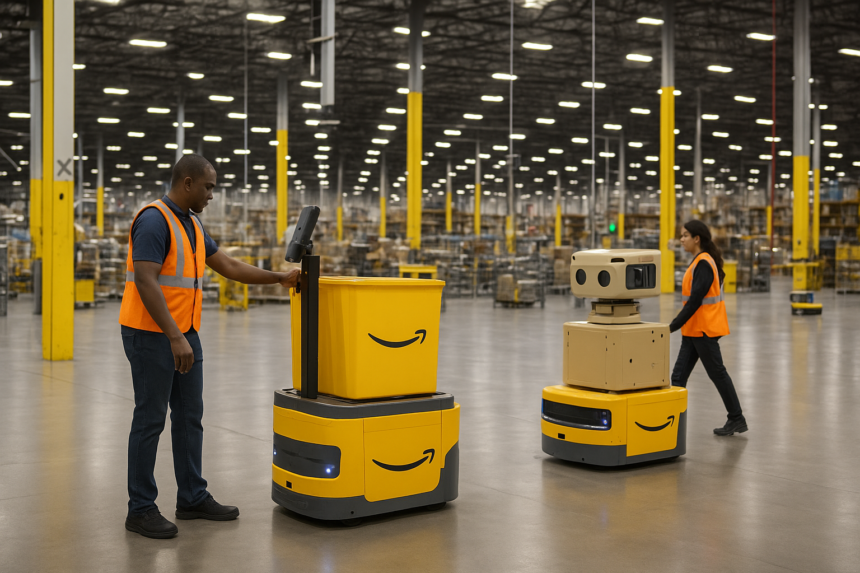In a major shift towards automation, Amazon is reportedly preparing to replace nearly 5 lakh human jobs with robots across its global warehouses and operations, according to recent reports. The move marks one of the most significant steps in the company’s long-term plan to improve efficiency through artificial intelligence (AI) and robotics.
⚙️ Automation Takes Center Stage
Amazon has been a leader in adopting automation technologies, integrating robots to handle repetitive warehouse tasks, packing, and product movement. This new phase, however, takes automation to a large-scale workforce transition — potentially impacting thousands of employees worldwide.
Industry experts reveal that Amazon is investing heavily in robotic systems capable of not just lifting and moving goods, but also performing tasks that were once exclusively human. The goal: to reduce delivery time and operational costs in a highly competitive e-commerce environment.
👩💻 Concerns Over Job Losses
While automation promises efficiency, it has also raised concerns about large-scale unemployment. Labor unions and analysts warn that replacing 5 lakh jobs could spark significant backlash, especially in countries where Amazon employs thousands in its fulfillment centers.
Reports suggest Amazon is “preparing for backlash” and developing internal programs to reskill affected employees or shift them to roles that still require human creativity and decision-making.
🌍 Global Reactions
The announcement has triggered global debate about the future of employment in an AI-driven world. Governments and worker unions have called for policies to balance technological growth with workforce protection.
Some tech leaders, however, argue that automation will lead to new types of jobs — in robot maintenance, AI management, and system design — ultimately transforming the job landscape rather than eliminating it entirely.
🧠 The Bigger Picture
Amazon’s move is seen as part of a broader global trend where AI and robotics are redefining industries. From logistics and manufacturing to customer service, the next decade is expected to witness widespread automation, posing new challenges for policymakers and the workforce alike.
As of now, Amazon has not released an official timeline for the implementation, but the report suggests the transition will begin gradually across major hubs in the US, Europe, and Asia.




